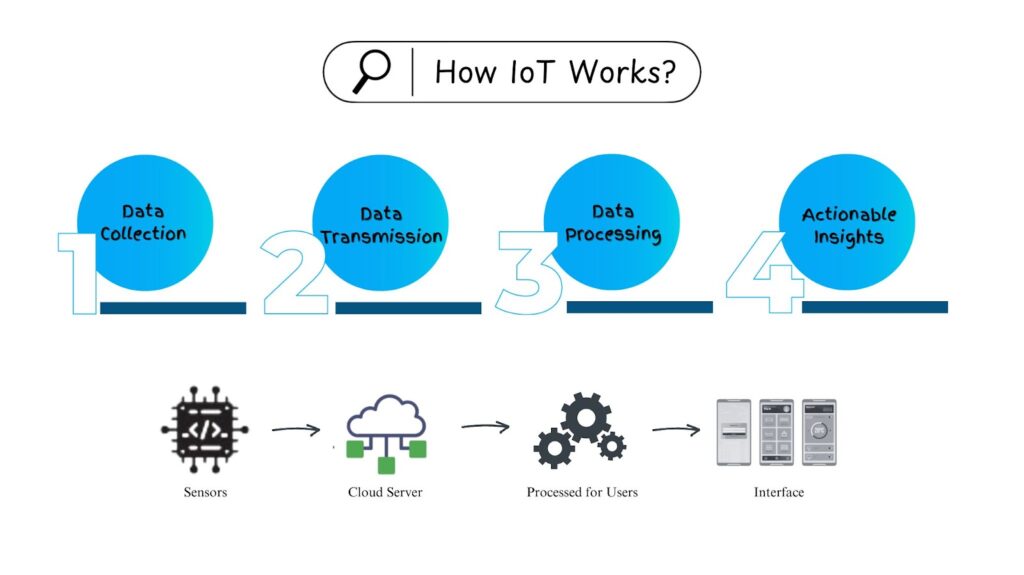Have you ever wondered about a world where every physical object communicates with each other? Wonder no more, because you are already living in such a world, made possible by IoT. This naturally leads us to the question: how IoT works? The IoT (Internet of Things) is a network of physical devices embedded with sensors and software to send and receive data. The current world revolves around IoT, which we describe as “smart devices”.
IoT enables these smart devices to create a network with other internet-enabled devices and transfer data to function more efficiently and autonomously. The IoT-embedded devices do not require human-to-human or human-to-computer interactions.
How does IoT Work?
The functioning of an IoT system begins with gathering data from the IoT sensors and software attached to the physical device. The data then passes through an IoT gateway for analysis by an application or a back-end system.
Here is a step-by-step guide on how IoT works:
Data Collection: The process starts with IoT devices collecting data using the sensors equipped with them. The data could include any physical activity, such as motion, temperature, or location.
Data Transmission: The system then transmits the data to the cloud or an IoT gateway using the connectivity of Wi-Fi, Bluetooth, or cellular networks.
Data Processing: At the IoT gateway or cloud platform, the data is analyzed and processed to derive actionable insights required for showcasing results.
Actionable Insights: The system then delivers these actionable insights to the interface, such as a dashboard or applications, to help the user make an informed decision.

Image: An illustration of How IoT Works
Components of IoT:
IoT Platform: An IoT platform is responsible for managing device connectivity. This software suite or cloud service manages software, hardware, and application layers.
Sensors: Sensors are the main component of IoT, as they set up the base for its functioning. These sensors help to detect real-world changes or variables and turn them into actionable data.
Connectivity: IoT devices need internet connectivity to share data from the sensor to the application/cloud. There are various methods of connecting devices, including Bluetooth and Wi-Fi.
Interface: The interface is the key component that reflects processed data to the users. The interfaces are intuitive, easy to use, and tailored to the user’s needs. Examples include Mobile Apps or dashboards.
Applications of IoT
The Internet of Things [IoT] has various applications, its usage ranges from small-scale agricultural needs to high-need healthcare sectors.
Healthcare
The use of blood pressure machines in the healthcare industry is a prime example of IoT needs. These devices not only help doctors make accurate and clear decisions but also demonstrate the importance of IoT for our daily life improvements. Multiple other IoT-enabled devices are contributing to the progress of our health and lifestyle.
Agriculture
The IoT devices can help monitor soil quality, leading farmers to make more informed decisions about planting, irrigation, and other farming activities. These devices can enhance agricultural efficiency and productivity.
Smartphones
Our smartphones are embedded with IoT sensors that help us gather information and data for better decision-making. From counting our daily steps to tracking our sleep cycle, IoT integration in smartphones helps us understand its needs in our daily lives.
The application of IoT is vast, ranging from a small gadget to an entire smart city. IoT is often seen as the talk of the future, although, it already is a significant part of our present.
Read more such blogs!
Pingback: Future of Fintech in India: Key Trends to Watch in 2025